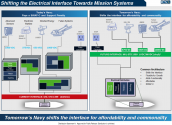Which one was that now? The 1kV threshold for high-voltage, as per USN? I mentioned my source for that. He's the same person who wrote the paragraph that you highlighted in red....
6. In the last highlight, you once again repeated a claim not backed up by an official document, while disregarding statements in two official documents.
You started patronizing me after my second post yesterday. Yes, I was wrong in my understanding of the MVDC definition (by 1V), but that's no justification. Now that I look back, you seem to have been tripped by the keyword 'rich'. That wasn't aimed at you, but at Gen Ma.Nobody could be so patient to talk to a pretending deaf (that is you), if you do it once or twice I can accept you are making honest mistakes, but third and forth time, I take that you are being deliberate and trolling, what else do you expect?
But it's OK when you insert off-topic discussions and then go on dozens of posts off-topic in this very thread on exactly the same subject:Because you are doing the following:
1. inserting an off topic subject (IEPS and MVDC) into the discussion of Catapult
PLAN Catapult Development Thread, News, etc.Finally the official evidence that USN is pursuing "MVDC" as well after PLAN has leapfrogged.
Last edited:


